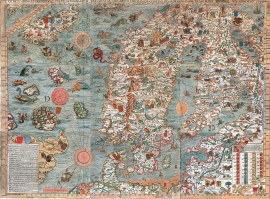Bakholmen has probably been a hostelry place way back to medieval times. In the 17th century we hear of an innkeeper with the name of “Mikkel i Bakholmen”. There has been small-time trading going on since the early 1600s, with trading privilege as early as 1714. Then the trade was moved here from Bakkasund.
Michael Olrich from Holland took citizenship in Bergen in 1697, and the powerful Olrich-family resided at Bakholmen up to the 1760s. Amongst others they owned trading places at Hiskjo in Bømlo and Kvalvåg, which at the time belonged to Fitjar and Våg coastal administration district, and a large part of the Austevoll church. The chandelier, which today hangs in the church at Storebø, was in its time a gift from Maren Olrich.
The courthouse is a reminder that Bakholmen was a central place in this coastal municipality way back in time. When Austevoll became a separate municipality in 1886, the courthouse in Bakholmen became the fixed venue for meetings of the municipal council and other municipal committees, and this is how it remained up to 1964. There was also a bank here and a ferryboat connection.
After 1964 there has been no activity at Bakholmen, but the buildings at the old guesthouse, trading and court centre are well kept and maintained by a new owner.




